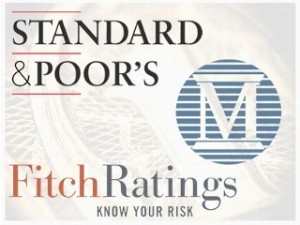
For those of you who are not familiar with the ratings agencies or the key role that they play in the stock and bond markets, they can be thought of as the “Turf Accountants” of the financial world. Just as a bookie sets the price on the runners and riders at the track, the ratings agencies shout the odds on corporate and government bond issues.
The idea is that if a corporation wishes to generate liquidity (for expansion or perhaps an acquisition) they will issue a bond to attract investors with cash. The value of the bond can rise or fall and will promise to pay the holder an agreed (and often variable) interest component. The job of the ratings agency is to evaluate the financial position of the issuer and make a determination of the risk associated with the investment. The lower the risk of a default (i.e. the business failing), the lower the interest that the issuer will need to pay to attract investors – the riskier the vehicle is perceived to be, the greater the interest that the issuer must pay. Bond issuers pay the ratings agencies a fraction of the value of the bond issue for their services.
The agencies also rate government bond on the same basis from AAA down to “junk” status. When the ratings agencies lose faith in a government’s ability to honour its debts (as in the case of Greece, Ireland, Portugal, Spain and Italy), the yields that these nations must pay to investors (the cost of borrowing) is forced up. Arguably, this move makes a sovereign default more likely and a viscous circle can form. It must be noted that not even a “junk” rating means that a sovereign default will happen – it just means that the agency thinks it is more likely. In the 70s and 80s, junk bonds fuelled much merger and acquisition activity around the world and lots of people got very rich.
Comments (No)